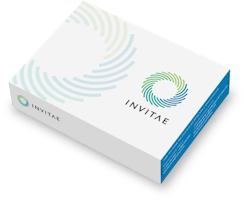
Invitae Nephronophthisis Panel
Test code: 04113 •
Test description
The Invitae Nephronophthisis Panel analyzes 27 genes that are associated with nephronophthisis (NPHP), which is characterized by renal and kidney cysts and end-stage renal disease. These genes were selected based on the available evidence to date to provide Invitae’s broadest test for NPHP.
Genetic testing of these genes may confirm a diagnosis and help guide treatment and management decisions. Although there is no treatment currently available to halt the onset of renal failure, a diagnosis may help prepare the patient, family, and clinician for the possibility of renal transplantation. Identification of a disease-causing variant can inform recurrence-risk assessment and genetic counseling.
Ordering information
Turnaround time:
10–21 calendar days (14 days on average)New York approved:
YesPreferred specimen:
3mL whole blood in a purple-top EDTA tube (K2EDTA or K3EDTA)Alternate specimens:
Saliva, buccal swab, and gDNA are also accepted.Learn more about specimen requirementsRequest a specimen collection kitClinical description and sensitivity
Clinical description:
NPHP is characterized by renal cysts, inflammation, and fibrosis, all leading to early onset end-stage renal disease. Characteristic renal histology shows corticomedullary cysts, tubular basement membrane disruption, and tubulointerstitial nephropathy. Additional symptoms related to the renal disease present in NPHP include polyuria, polydipsia, fatigue, and anemia. Extra-renal manifestations are present in approximately 10% of individuals with NPHP and often involve the eye, brain, heart, and liver. Individuals with extra-renal involvement present with phenotypes that are more similar to other ciliopathy-related disorders, such as Senior-Loken syndrome, Joubert syndrome, Bardet-Biedl syndrome, and Meckel-Gruber syndrome. Extra-renal findings can include retinal degeneration, retinitis pigmentosa, cerebellar vermis hypoplasia, intellectual disability, ataxia, liver fibrosis, ventricular septal defect, molar tooth sign, and cone-shaped epiphyses.
Assay information
Invitae is a College of American Pathologists (CAP)-accredited and Clinical Laboratory Improvement Amendments (CLIA)-certified clinical diagnostic laboratory performing full-gene sequencing and deletion/duplication analysis using next-generation sequencing technology (NGS).
Our sequence analysis covers clinically important regions of each gene, including coding exons and 10 to 20 base pairs of adjacent intronic sequence on either side of the coding exons in the transcript listed below, depending on the specific gene or test. In addition, the analysis covers select non-coding variants. Any variants that fall outside these regions are not analyzed. Any limitations in the analysis of these genes will be listed on the report. Contact client services with any questions.
Based on validation study results, this assay achieves >99% analytical sensitivity and specificity for single nucleotide variants, insertions and deletions <15bp in length, and exon-level deletions and duplications. Invitae's methods also detect insertions and deletions larger than 15bp but smaller than a full exon but sensitivity for these may be marginally reduced. Invitae’s deletion/duplication analysis determines copy number at a single exon resolution at virtually all targeted exons. However, in rare situations, single-exon copy number events may not be analyzed due to inherent sequence properties or isolated reduction in data quality. Certain types of variants, such as structural rearrangements (e.g. inversions, gene conversion events, translocations, etc.) or variants embedded in sequence with complex architecture (e.g. short tandem repeats or segmental duplications), may not be detected. Additionally, it may not be possible to fully resolve certain details about variants, such as mosaicism, phasing, or mapping ambiguity. Unless explicitly guaranteed, sequence changes in the promoter, non-coding exons, and other non-coding regions are not covered by this assay. Please consult the test definition on our website for details regarding regions or types of variants that are covered or excluded for this test. This report reflects the analysis of an extracted genomic DNA sample. In very rare cases, (circulating hematolymphoid neoplasm, bone marrow transplant, recent blood transfusion) the analyzed DNA may not represent the patient's constitutional genome.
You can customize this test by clicking genes to remove them.
Primary panel
Question about billing?
Find answers